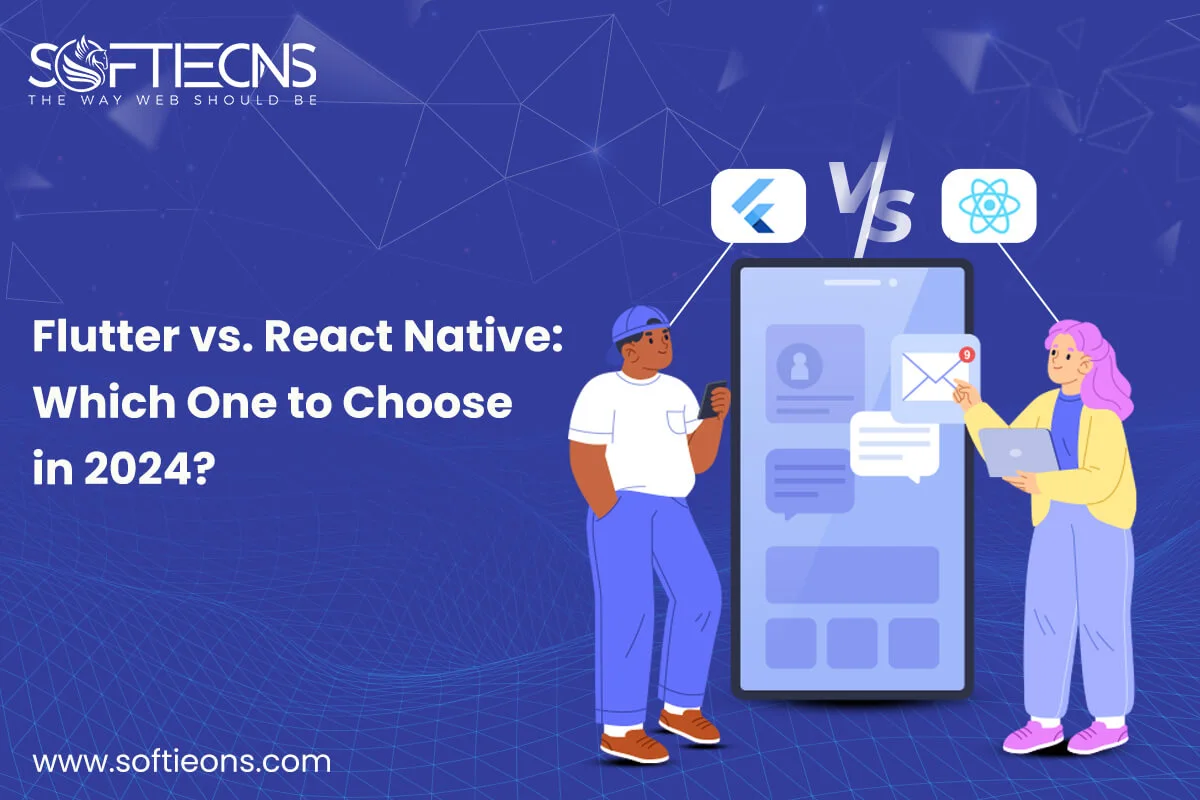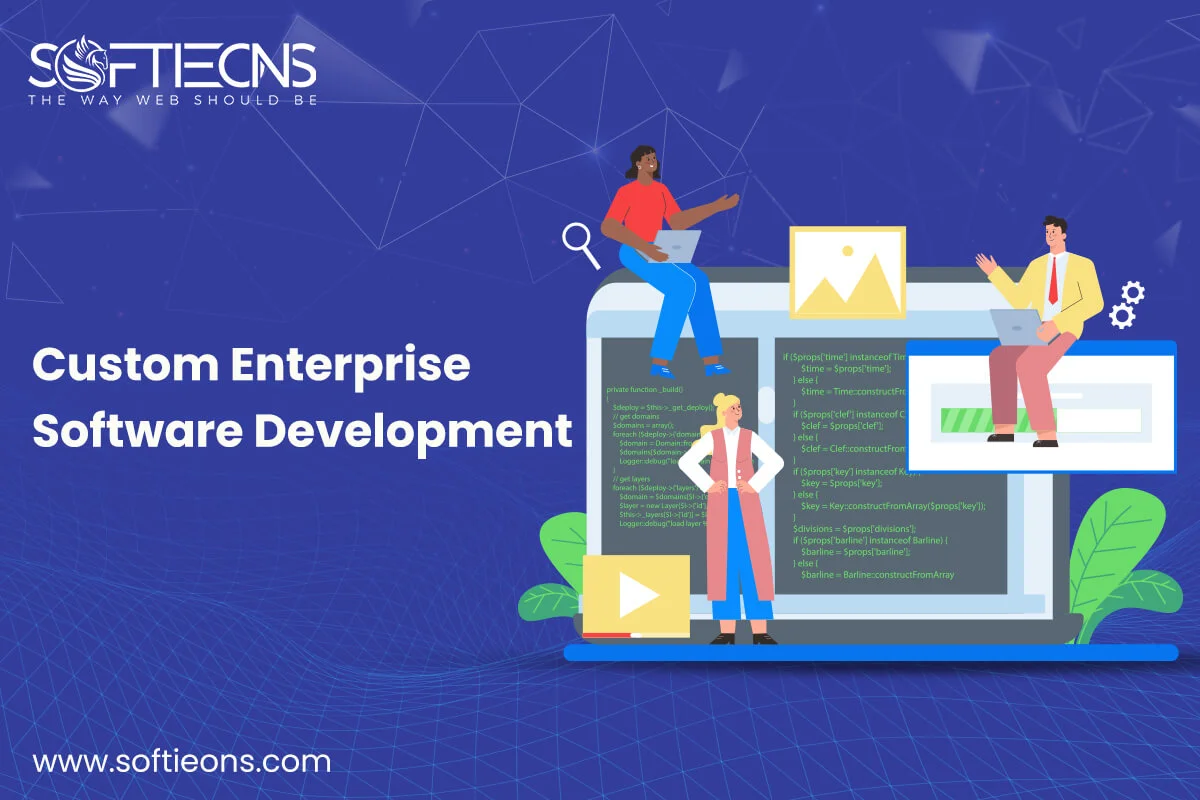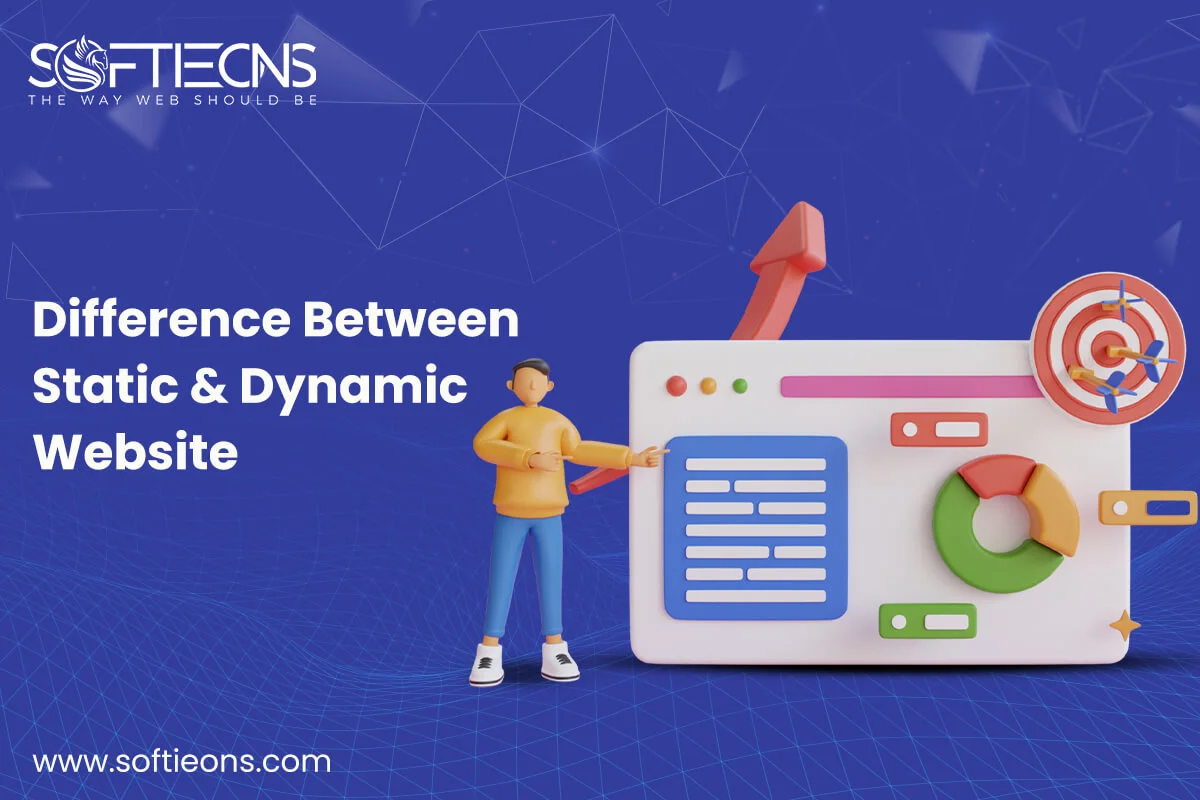Flutter vs. React Native: Which One to Choose in 2024?
Mon, 22 Apr 2024
Two of the main contenders in this realm are Flutter and React Native. In the unexpectedly evolving landscape of cellular app improvement, selecting the right framework is essential for builders and agencies alike. As we step into 2024, the controversy over which framework to pick is still an everyday topic of dialogue. In this newsletter, we can delve right into a complete assessment of Flutter and React Native, evaluating numerous elements that include performance, developer productivity, community guides, platform compatibility, and destiny traits. By the end of this evaluation, you will have the insights you need to make a knowledgeable decision on selecting the correct framework for your mobile app improvement endeavors.
Introduction to Flutter and React Native
Overview of Flutter
Flutter is a popular open-source UI software program improvement kit created by Google. It lets builders build natively compiled packages for cell phones, the internet, and laptops from an unmarried codebase. With a focus on presenting a wealthy set of customizable widgets and a reactive framework, Flutter has gained traction for its speedy improvement cycles and hot reload characteristics.
Overview of React Native
React Native is a framework developed with the aid of Facebook for building cross-platform applications using JavaScript and React. It enables developers to create local-like reviews for each iOS and Android system with a shared codebase. React Native is understood for its robust community help and extensive documentation, making it a cross-over desire for many developers.
Performance and Speed Comparison
Rendering Performance
Flutter is famed for its amazing rendering performance, thanks to its use of the Skia picture engine and Dart language. This allows for easy animations and transitions, resulting in visually attractive applications. React Native, on the other hand, is based on a bridge to speak with local additives that can, from time to time, result in performance bottlenecks.
Start-up Time Comparison
When it comes to start-up time, Flutter generally plays higher than React Native. Flutter's beforehand-of-time compilation allows for quicker initialization and reduced release instances for packages. React Native, whilst constantly enhancing its start-up overall performance, may additionally nonetheless lag behind Flutter on this aspect.
Developer Productivity and User Experience
Development Workflow and Tools
Flutter offers a streamlined development workflow with features like warm reload, which lets developers view modifications immediately without restarting the app. React Native also presents a short remarks loop with its fast refresh feature; however, some developers decided on Flutter's more seamless experience.
User Interface Design and Experience
Flutter affords a wealthy set of customizable widgets and a flexible format machine, enabling builders to create visually stunning user interfaces. React Native, while offering a huge range of UI components and libraries, may require greater customization to achieve the desired layout aesthetics.
Community Support and Ecosystem in Flutter and React Native
Community Size and Activity
Both Flutter and React Native have energetic and supportive groups that provide sources, tutorials, and solutions to unusual troubles. Flutter's community has been growing hastily, while React Native benefits from its association with the broader React atmosphere.
Third-Party Libraries and Plugins Availability
Flutter boasts a growing range of third-party programs and plugins available to cover a huge variety of functionalities. React Native additionally has a large choice of community-created modules on npm, imparting answers for various development desires. Developers can choose either framework based on the specific requirements of their mission.
Platform Compatibility and Integration as Flutter and React Native
When it comes to platform compatibility and integration, both Flutter and React Native provide strong support for growing packages across exclusive structures. While Flutter has a part to play in terms of having an unmarried codebase for each iOS and Android platform, React Native's considerable network support guarantees compatibility with numerous platforms. Flutter's seamless integration with local code and APIs may be advantageous for builders looking to tap into the whole capability of the tool, while React Native's bridge to local components gives flexibility in accessing platform-precise functionality.
Support for Different Platforms
Flutter stands out with its capacity to create applications for iOS, Android, net, desktop, or even embedded devices using an unmarried codebase. On the other hand, React Native commonly focuses on iOS and Android structures but has increasing support for net and other structures through network-driven tasks. When selecting between Flutter and React Native based totally on platform aid, bear in mind the precise structures you purposely target and the extent of platform-unique capabilities required for your software.
Integration with Native Code and APIs
Flutter excels at integrating with local code and APIs via its platform channels, allowing builders to get access to tool features seamlessly. React Native provides a bridge to local modules, enabling interplay with platform-precise APIs and functionalities. The preference among Flutter and React Native for integration with local code depends on the depth of integration required and the familiarity of builders with the respective frameworks.
Future Trends and Updates in Flutter and React Native
As we look in advance to 2024, both Flutter and React Native are expected to introduce interesting features and upgrades to cater to the evolving needs of developers and customers. Flutter's upcoming features may additionally focus on enhancing performance, enhancing developer productivity, and expanding guides for added structures. React Native is possibly going to introduce advancements in tooling, performance optimizations, and improved compatibility with rising technologies.
Upcoming Features and Enhancements Flutter and React Native
Flutter lovers can count on upgrades in hot reload talents, augmented reality assistance, and stronger UI additives in the upcoming releases. React Native builders can sit up for enhanced performance optimizations, stepped-forward navigation solutions, and stronger support for concurrent mode in React. Keeping an eye on the upcoming features and upgrades can help developers align their technology picks with the evolving developments within the mobile app improvement landscape.
Adoption Trends and Industry Insights
Tracking the adoption traits and industry insights of Flutter and React Native can provide treasured insights into the recognition and marketplace acceptance of every framework. Flutter's fast growth in go-platform improvement and its backing by Google show off a sturdy enterprise adoption trend. React Native's hooked-up presence within the cellular development ecosystem and help from agencies like Facebook indicate a solid marketplace role. Understanding adoption traits and industry insights can aid developers in making knowledgeable selections while choosing a framework for their initiatives.
Case Studies and Use Cases
Exploring success case research and using instances of packages built with Flutter and React Native can provide precious insights into the capabilities and performance of every framework in actual-world scenarios. By inspecting the achievements of apps that evolved with Flutter and React Native, builders can gain a deeper understanding of the strengths and boundaries of every platform.
Successful Apps Built with Flutter
Apps like Google Ads, Alibaba, and Reflectly have leveraged Flutter's competencies to deliver high-overall performance and visually appealing user stories across structures. Flutter's capacity to create custom UI designs and offer a smooth consumer experience has made it a popular choice for applications requiring an elegant appearance and sense.
Successful Apps Built with React Native
Apps, including Facebook, Instagram, and Airbnb, have utilized React Native's flexibility and overall performance to build function-rich and person-pleasant programs. React Native's adaptability to platform-unique requirements and the availability of ready-to-use additives have made it a desired framework for developing apps with complex functionalities.
Conclusion: Making the Right Choice
When deciding between Flutter and React Native in 2024, keep in mind factors including platform compatibility, integration with local code, upcoming functions, adoption developments, and success case research. Both frameworks provide specific advantages and cater to special development options and project necessities. By comparing your precise desires, project goals, and technical expertise, you can make a knowledgeable decision that aligns with your development priorities and long-term targets. Whether you opt for the streamlined move-platform development technique of Flutter or the flexibility and environment aid of React Native, remember that the important thing to achieve lies in deciding on the framework that fits your project's requirements and your crew's strengths.
In conclusion, the selection of Flutter and React Native in 2024 ultimately depends on your specific undertaking necessities, group understanding, and lengthy-term objectives. Both frameworks provide distinct advantages and considerations, making it essential to weigh the factors mentioned in this assessment. Whether you prioritize overall performance, community aid, or seamless platform integration, each framework has its strengths to provide. As you navigate the dynamic panorama of mobile app development, keep in mind that the proper preference lies in aligning the talents of Flutter or React Native with your precise venture desires.
POPULAR POSTS
Shopify vs. WordPress: Which one is best for e-commerce?
Wed, 07 Apr 2021Role of IoT in the Real Estate Industry
Wed, 14 Apr 2021Why UX And UI Is Important For Mobile Application Development
Sat, 01 May 2021Telemedicine's Advantages in Nursing Homes
Fri, 24 Dec 2021RECENT POSTS
Custom Enterprise Software Development
Mon, 29 Apr 2024Difference Between Static Website And Dynamic Website
Wed, 24 Apr 2024Flutter vs. React Native: Which One to Choose in 2024?
Mon, 22 Apr 2024Exploring the Benefits of Professional Website Design Companies
Fri, 29 Mar 2024Understanding The Role Of Web Design Firms
Fri, 22 Mar 2024








